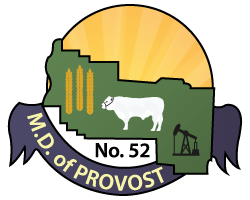Assessment
Understanding Your Assessment
Property assessments in Alberta are based upon a combination of market value and regulated rates. Residential and Non-Residential properties are assessed at market value. Farmland, machinery and equipment, and linear properties are assessed using Provincial regulated rates.
- The Provincial Government establishes the legislation, policies and guidelines that determine how assessments are to be completed.
- The Assessment Department calculates your assessment according to the Provincial legislation and guidelines.
- Assessors use sales information to calculate the value of your property.
- The marketplace and not the assessor determine the value of your property. Thus, properties with similar market values will have comparable assessed values.
- Property owners have the right to appeal their assessment to the Assessment Review Board and the Municipal Government Board. The appeal must be on the provincially approved assessment complaint form (available at the MD office) and must be made within 60 days of the mailing of the assessment / tax notice.
Residential and commercial properties are assessed at market value using mass appraisal techniques. Market value is determined by examining multiple sales of property. It is not a specific price.
Farmland is assessed per regulated rates based on the productivity value.
Pipeline and powerline are assessed on regulated rates established by the province.
Industrial oilfield and manufacturing plants are assessed based upon a combination of the cost approach and regulated rates.
For enquires or questions about your property assessment or the assessment process please call the assessor, Andre Guilbault at (780) 753-2434.
Tax Information
2024 tax rates, as set by Bylaw #2325, are available here.
2023 tax rates, as set by Bylaw #2320, are available here.
2022 tax rates, as set by Bylaw #2301, are available here.
2021 tax rates, as set by Bylaw #2301, are available here.
2020 tax rates, as set by Bylaw #2301, are available here.
2019 tax rates, as set by Bylaw #2287, are available here.
2018 tax rates, as set by Bylaw #2276, are available here.
2017 tax rates, as set by Bylaw #2264, are available here.
2016 tax rates, as set by Bylaw #2255, are available here.
2015 tax rates, as set by Bylaw #2249, are available here.
A millrate comparison sheet covering the years 2016-2023 can be found here; 2016-2022 can be found here; 2017 – 2019 can be found here; 2015 – 2017 can be found here; 2013 -2015 may be found here and the years 2008 -2013 here.
A comparison of taxation rates between the M.D. of Provost No. 52 and other jurisdictions may be found here.
FAQ
What is a mill rate?
A mill rate is the rate used to calculate your annual tax levy. It is the amount of taxes to be raised for every $1 of assessed value. For example; with a residential mill rate of 9.8574, a tax parcel valued at $100,000 would have a tax levy of $985.74. The mill rates are set every year by a bylaw approved by the M.D. Council.
How is the mill rate calculated?
The mill rates are calculated by dividing the amount of revenue required by the MD by the total assessment of all taxable property within the M.D. of Provost. The tax levy is calculated by multiplying the mill rate by the property assessment.
What is the Mill Rate?
These are the latest mill rates for the MD of Provost.
What is Market Value?
Market value is the most probable price, which would be paid for a property in a competitive and open market. It assumes the buyer and seller are acting prudently and knowledgeably, allowing sufficient time for the sale and assumes that undue pressures do not affect the transaction.
What are Property Classes?
Once the assessment has been determined, the Assessor’s Office must determine which tax classification is appropriate for your property. There are several different property tax classifications used in the M.D. of Provost; Single Family Residential, Non-Residential, and Farmland. Different tax rates are set for these different property tax classifications. Farmland is assessed at its’ productivity rating rather than market value.
How is Property Valued?
Property is valued through the application of mass appraisal practices using information from all property sales within the M.D. to estimate the market value of your property. The valuation will take into account all the market conditions that may affect your property’s value such as: location, size, shape, replacement cost, age and condition of your buildings.
We paid $125,000 for our property. Why is it assessed at $140,000?
The real estate market has many forces affecting the value of property. These include supply and demand, motivation of buyers and sellers, renovations, remodeling, normal wear and tear and so on. The assessment of your property should reflect an average sales price for similar properties using comparative sales up to July 1 of the previous year. Also, the assessment will reflect the physical condition of the property effective December 31 of the previous year.
What can I do if I disagree with the Assessor’s estimate of my property value?
The assessor would be pleased to review your assessment information with you. If there is still disagreement in regards to the assessment, within 60 days of the mailing of the assessment/tax notice property owners have the right to appeal their assessment to the Local Assessment Review Board or the Composite Assessment Review Board. The assessor can go over the process with you at that time.
For further information please refer to: http://www.qp.alberta.ca/574.cfm?page=2009_310.cfm&leg_type=Regs&isbncln=9780779745937
